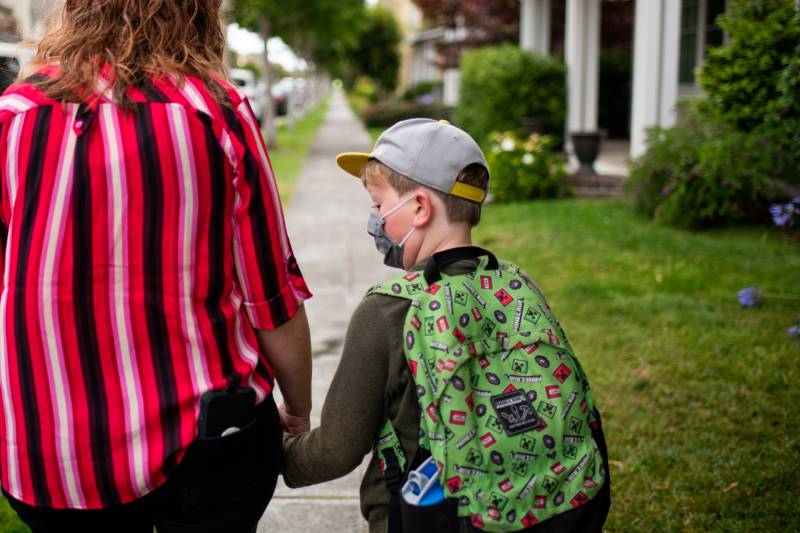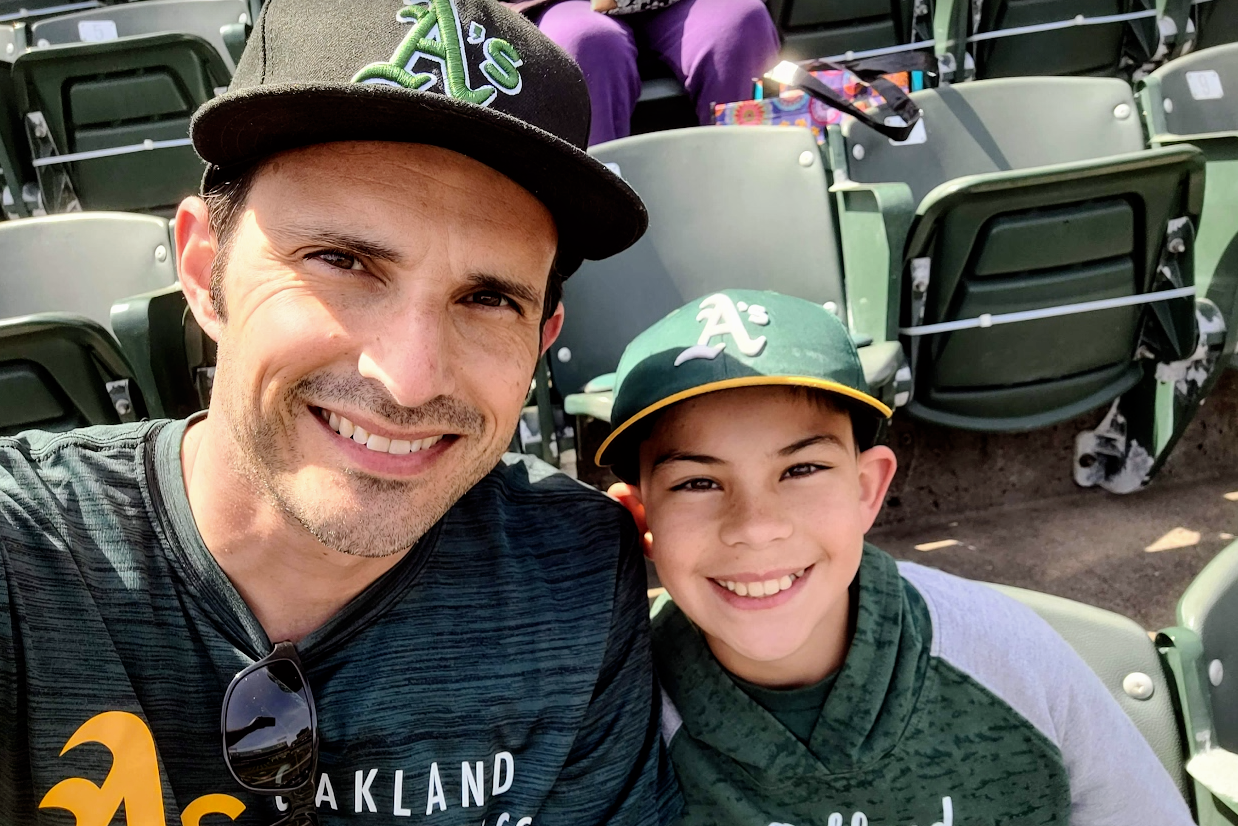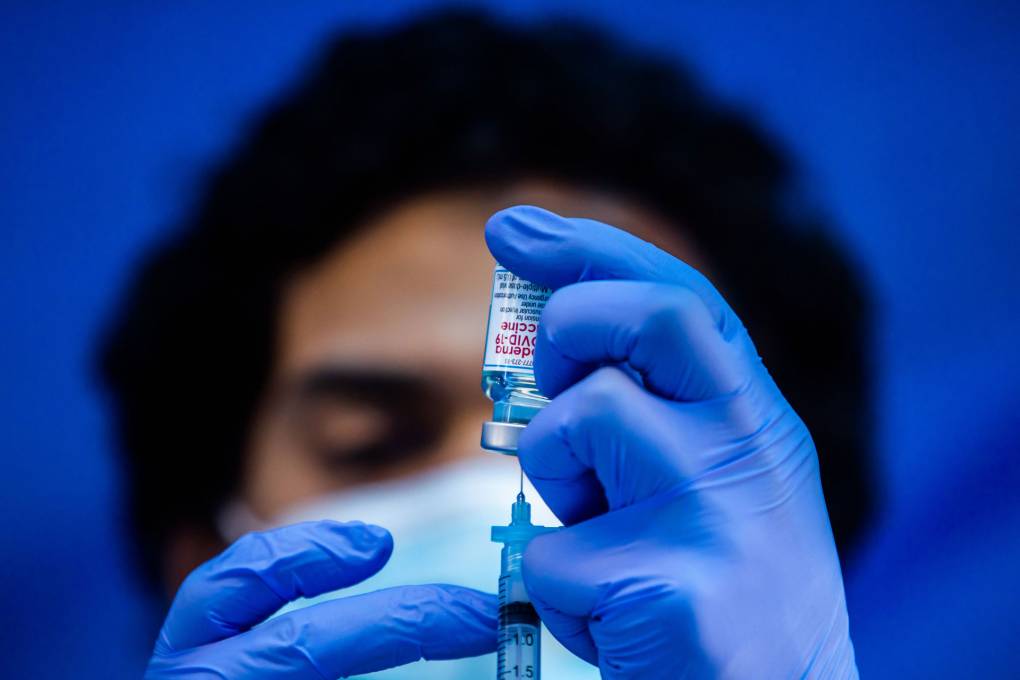This story has been updated.
“We were so careful,” said Alysha Johnson, a resident of Discovery Bay in Contra Costa County. “I’m a germaphobe. When this whole thing happened, we didn’t leave the house for six months.”
Johnson was crushed when her toddler, River, caught COVID-19 at a summer play group in late July.
“It was a pretty big deal how sick he got,” said Johnson. “It wasn’t just a little sniffle.”
Her 2-year-old suffered a sore throat, a cough and a fever of 104 degrees. The bout lasted more than a week and sickened Johnson, her sister and her boyfriend — all of whom were vaccinated.
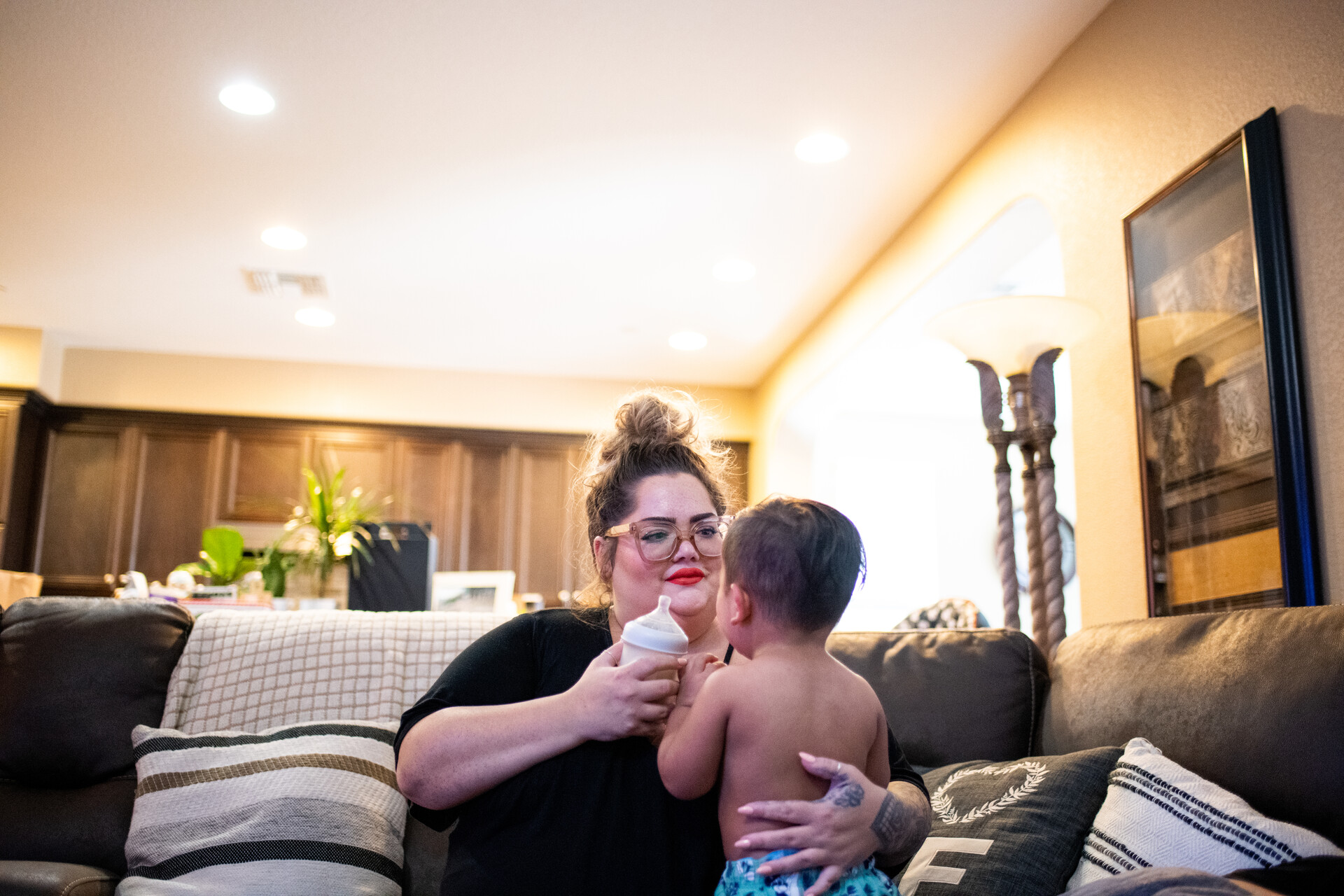
“It felt like a really bad sinus cold,” Johnson said. “I felt exhausted. I lost my sense of taste and smell. That was the most bizarre sensation.”
Johnson is relieved she had her shots protecting her against a more severe case of COVID-19. But the fact that kids are transmitting the coronavirus to family members is unnerving many parents as children head back to school, especially as a coronavirus vaccine for kids under 12 is not yet available.
During the first week of school, 58 students and 10 staff members tested positive in Oakland Unified School District schools. The tallies are much higher in other parts of the country. Last week, more than 3,000 students and staff had to quarantine in Florida’s Brevard Public Schools. And in Hawaii, many schools are pulling the plug and returning to remote learning.
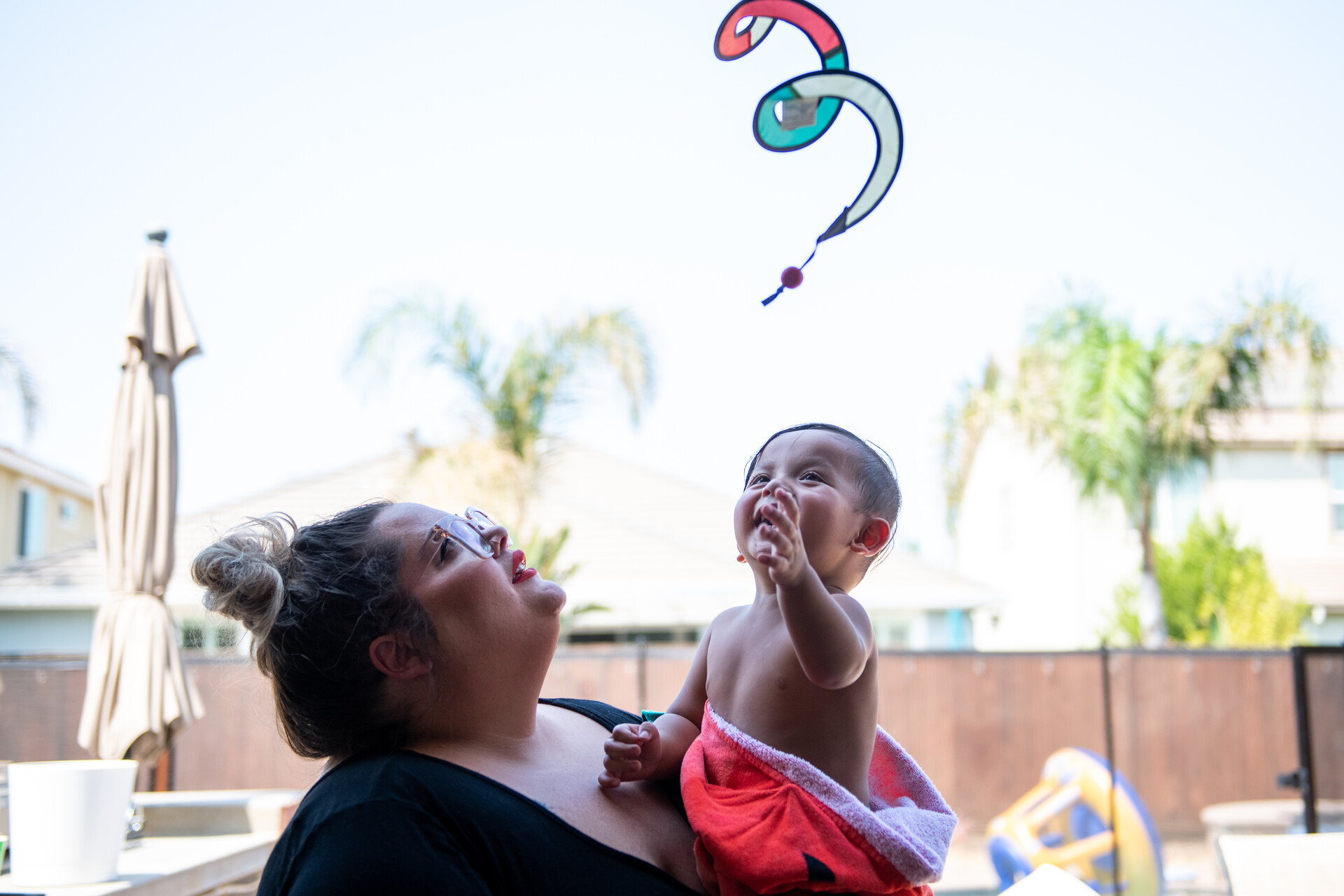
Nationwide about 121,000 children tested positive for the virus from August 5 to 12, according to the American Academy of Pediatrics and the Children’s Hospital Association. That’s a 23% increase over the prior week.
“Time and time again we’re seeing kids return to school and then come home either after an exposure or sick themselves,” said Dr. Nicole Braxley, an emergency medicine physician at Mercy San Juan Medical Center in Carmichael. “The virus sheds for a couple of days before the patient has symptoms. Entire families are suddenly exposed.”
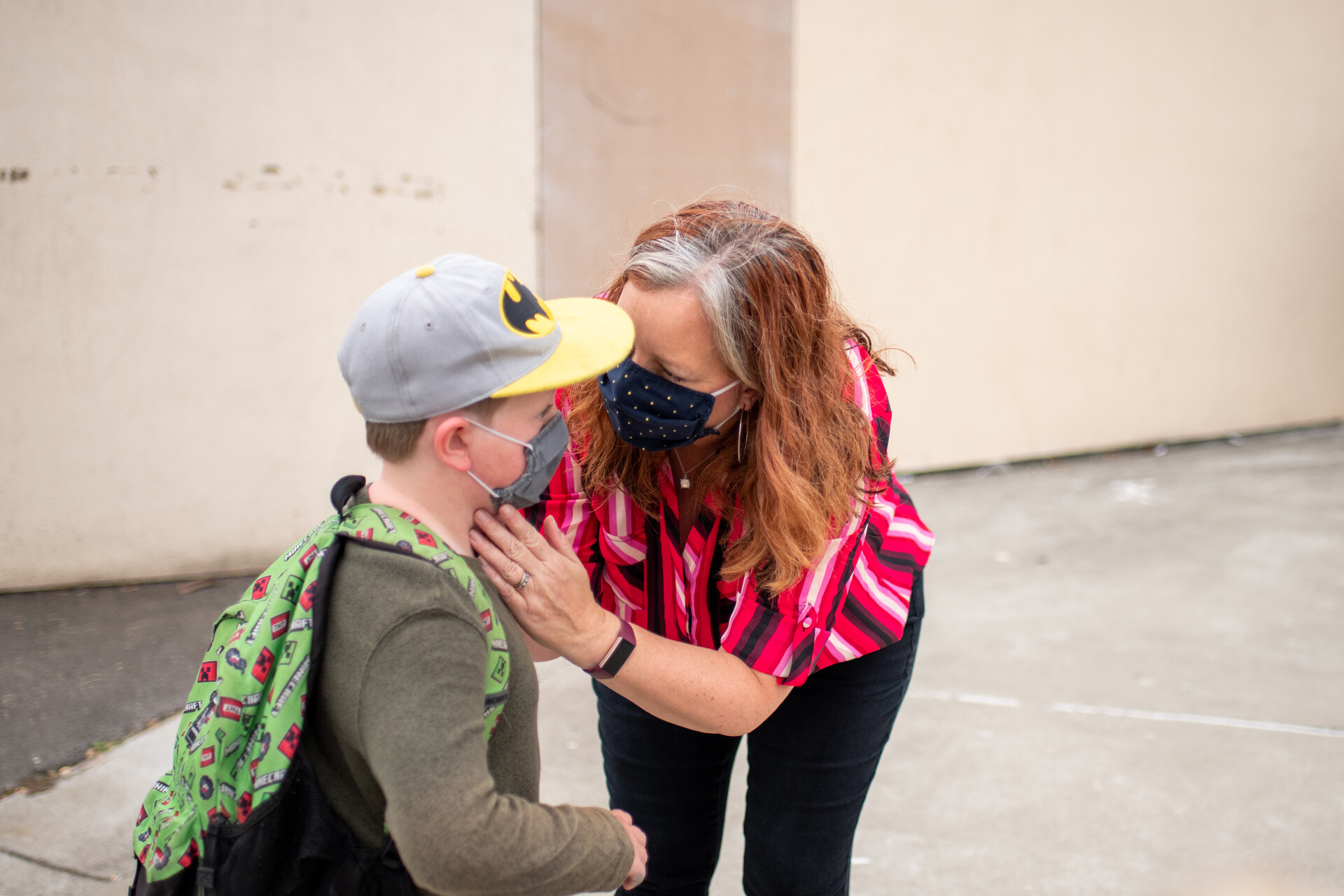
‘The longest few days of my life’
Stephanie Chenard’s 8-year-old son Desmond started third grade in Alameda this Tuesday. That evening after her son returned from his first day of classes, she received an email. The district reported four positive COVID-19 cases in four different schools.
“It’s already started,” Chenard texted KQED after receiving the email, including a tearful emoji in her message.
She knows firsthand how much a mild pediatric case can upend family life. About a month ago Desmond started to lose his appetite. He quickly developed a fever. Chenard grimaced when he tested positive for COVID-19. The news devastated her son.
“He just burst out into tears,” she said.
The family canceled a long-awaited summer trip to Lake Tahoe. Instead they quarantined at home.
